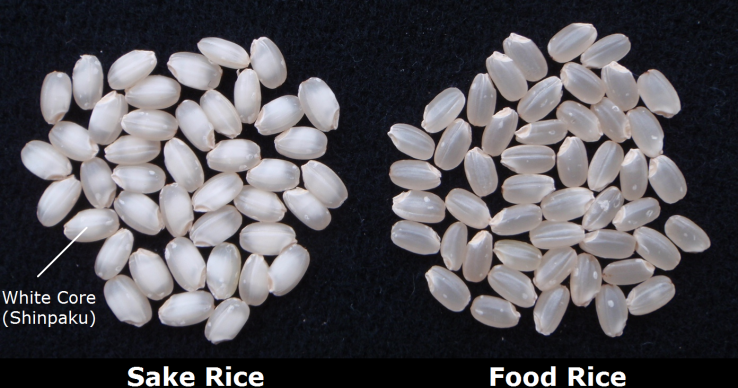Sommelier Talk: Episode 10 – Sakamai (Sake Rice)
Have you wondered why sake requires a certain type of rice, namely sake rice as opposed to rice which is used for consumption? Let’s take a close look at sake rice, or sakamai in Japanese.
So, why do brewers use sake rice, a particularly expensive and difficult to strain of rice to grow? It’s because sake rice, or shuzo kotekimai (literally meaning rice ideally suitable for sake brewing) holds structural characteristics conducive to Koji saccarification. Centered inside each sake rice kernel is an oval shaped mass called shinpaku made mostly of soft starch. Shinpaku , or “white soul”; is a most inviting host for koji mold to penetrate into, to propagate easily, and to actively convert rice starches into fermentable sugar. In facilitating the koji to reach the shinpaku, outer portions of the rice kernel are first removed by way of polishing or gently grinding away. This is an arduous process requiring great care, as over polishing will cause the fragile sakamai to crumble.
Rice polishing serves another important purpose. Since the outer portions of sake rice contain proteins and fats which produce zatsumi, or rough and unbalanced flavored sake, polishing rids the undesirable element. The proportion of the polish is measured in seimaibuai, or rice remaining ratio, which also designates the eventual sake grade it would be classified under. Rice remaining ratio refers to the percentage of rice remaining after polish. So let’s say, starting with brown rice as 100% polish ratio, when 40% of the outer portion is removed, the resulting rice polish ratio becomes 60%, and would be listed as ginjo premium grade sake. In general, the lower the rice polish ratio, the more refined and lighter the sake becomes. In contrast, sake with higher rice polish ratio would have fuller body and pronounced character. For your information, one 1.8 liter ginjo sake requires approximately over 3 pounds of brown rice to produce.
Yamadanishiki sake rice is the sake rice preferred by brewers of most fine sake. It holds a high shinpaku yield. The structural integrity of this popular sakamai is rather sturdy and able to withstand breakage during polishing, yet dissolves easily during fermentation. Furthermore, Yamadanishiki contains little protein, disliked by brewers for its tendency to interfere with and alter the flavor of the finished product.
Rather than being limited to commercially available sakamai, Yamadanishiki being one of them, advanced research and brewing technology helps sake breweries make possible the use of locally harvested sake rice. Some breweries go the distance and grow their own sakamai, nourished by local soil and water . . . now that’s the true meaning of Jizake, regionally crafted, artisan sake. These rare, signature brews are just starting to enter the international market, some with very high recognition.
As an avid sake fan, I truly appreciate and encourage the continuing innovations that sake breweries endeavor to keep improving their brewing art.





Comments